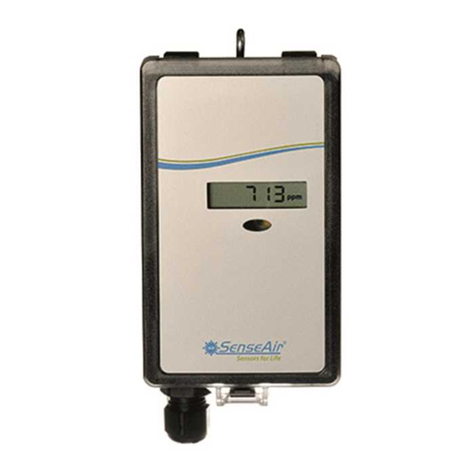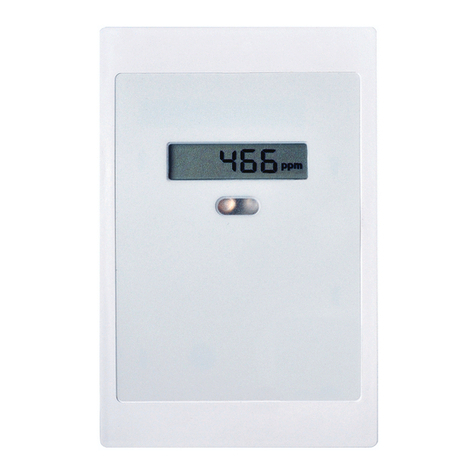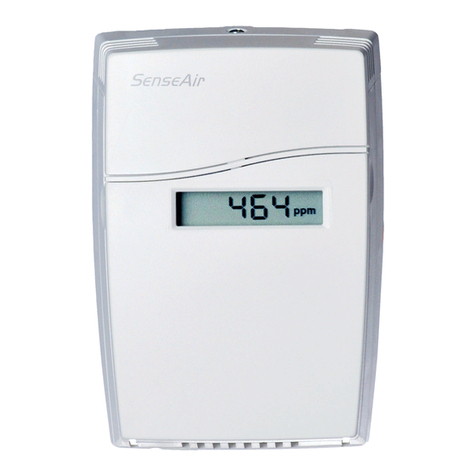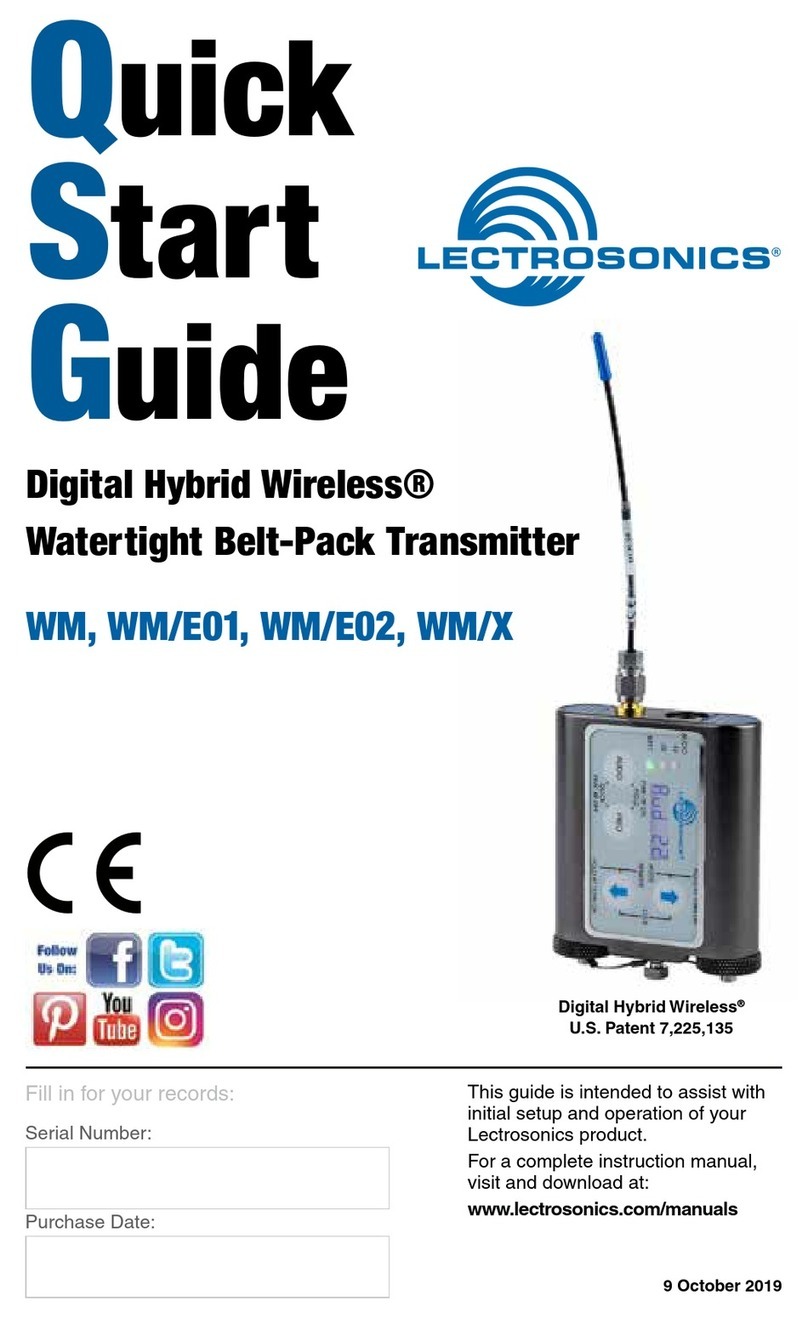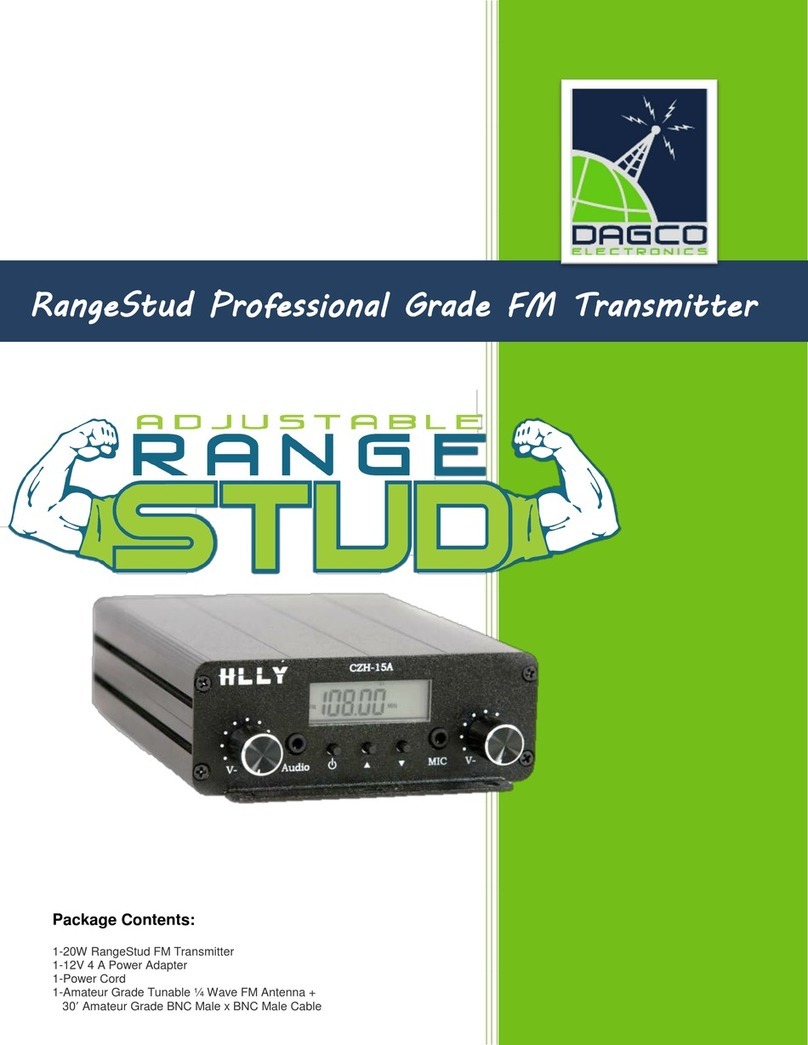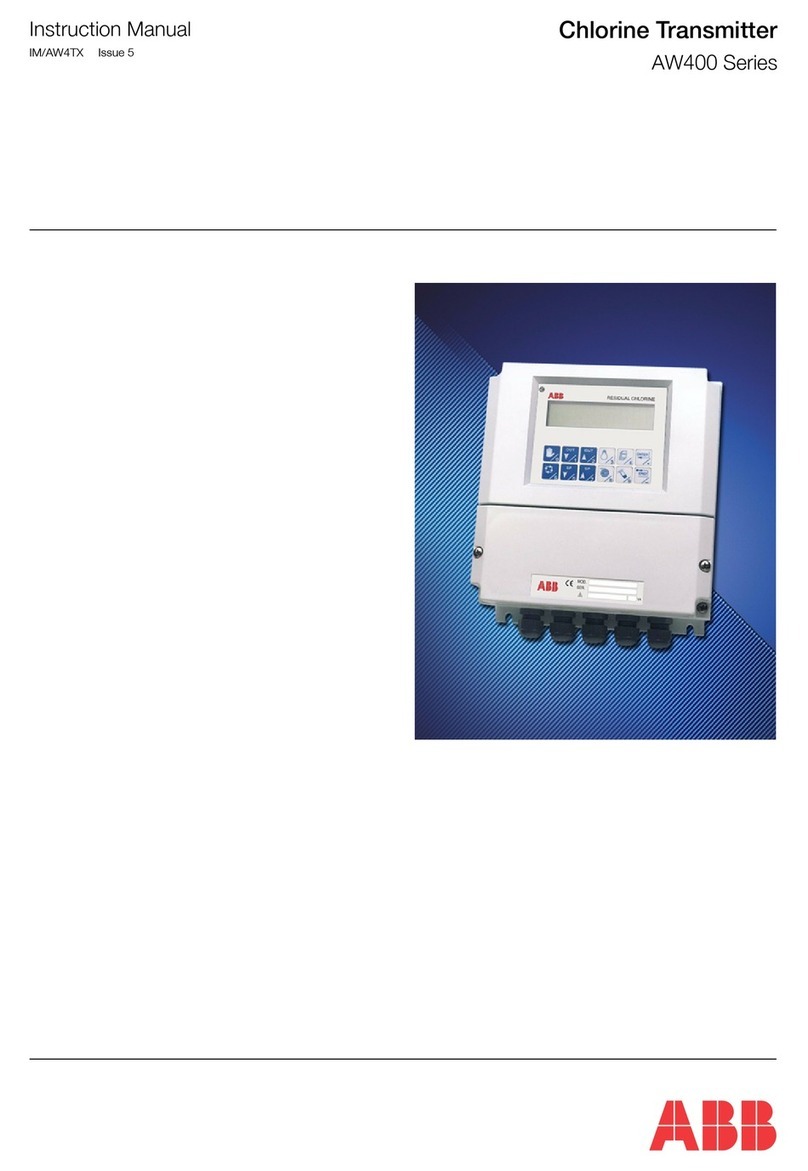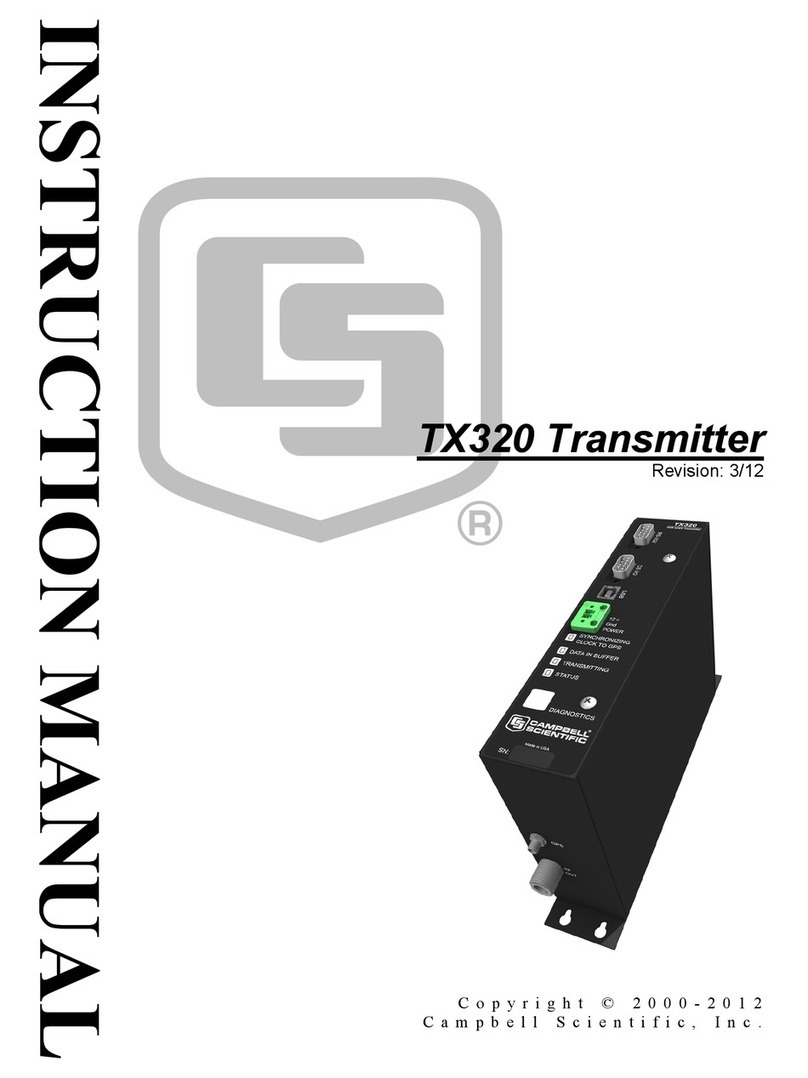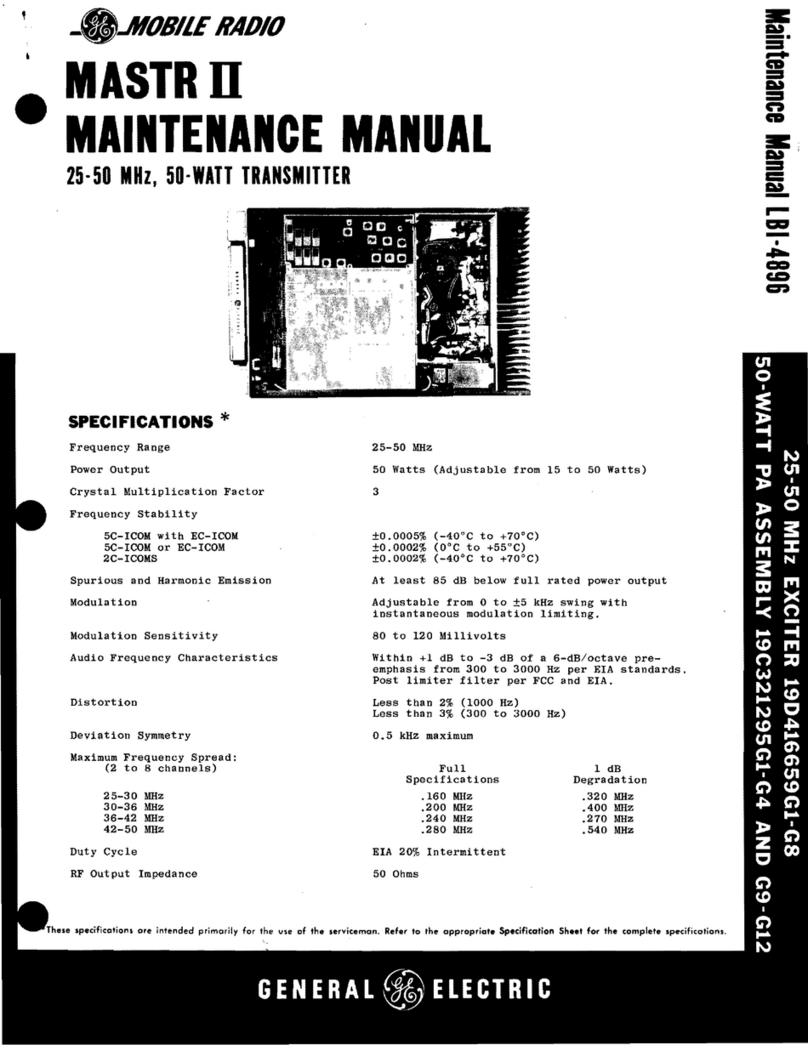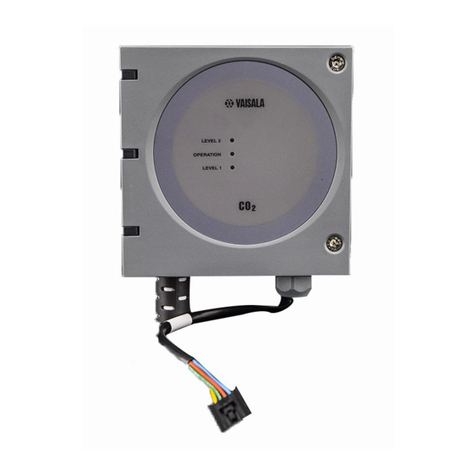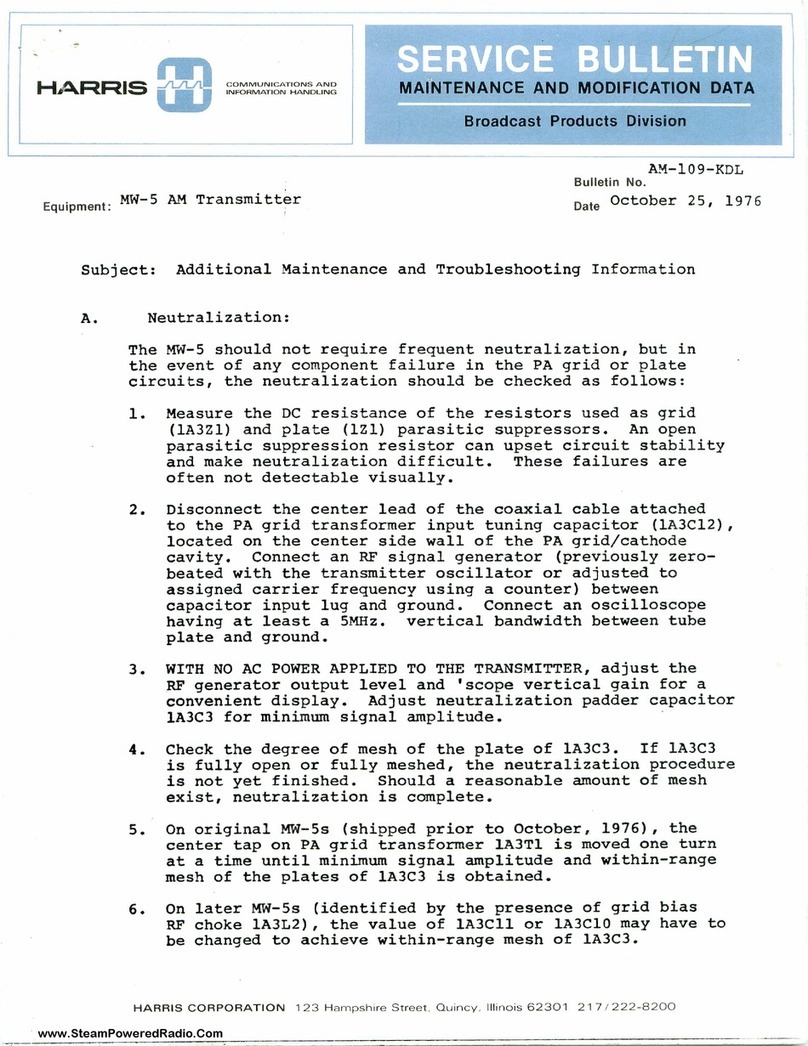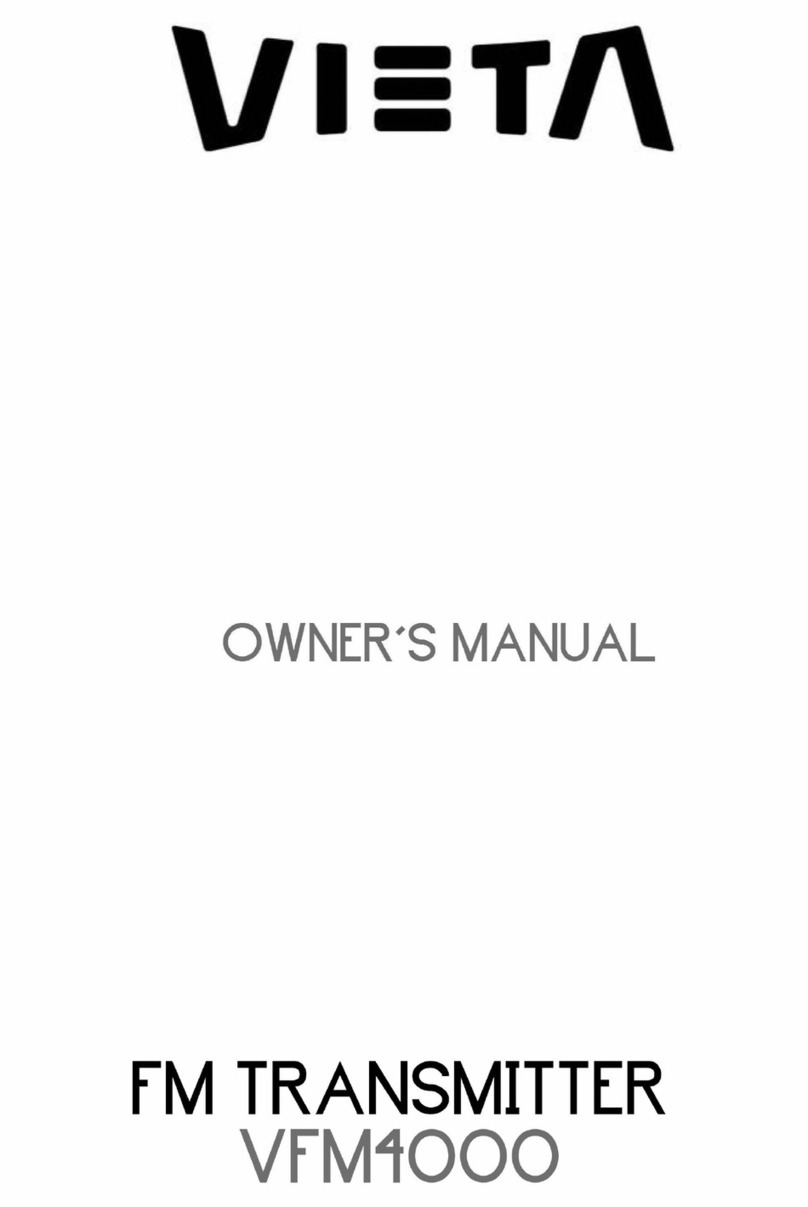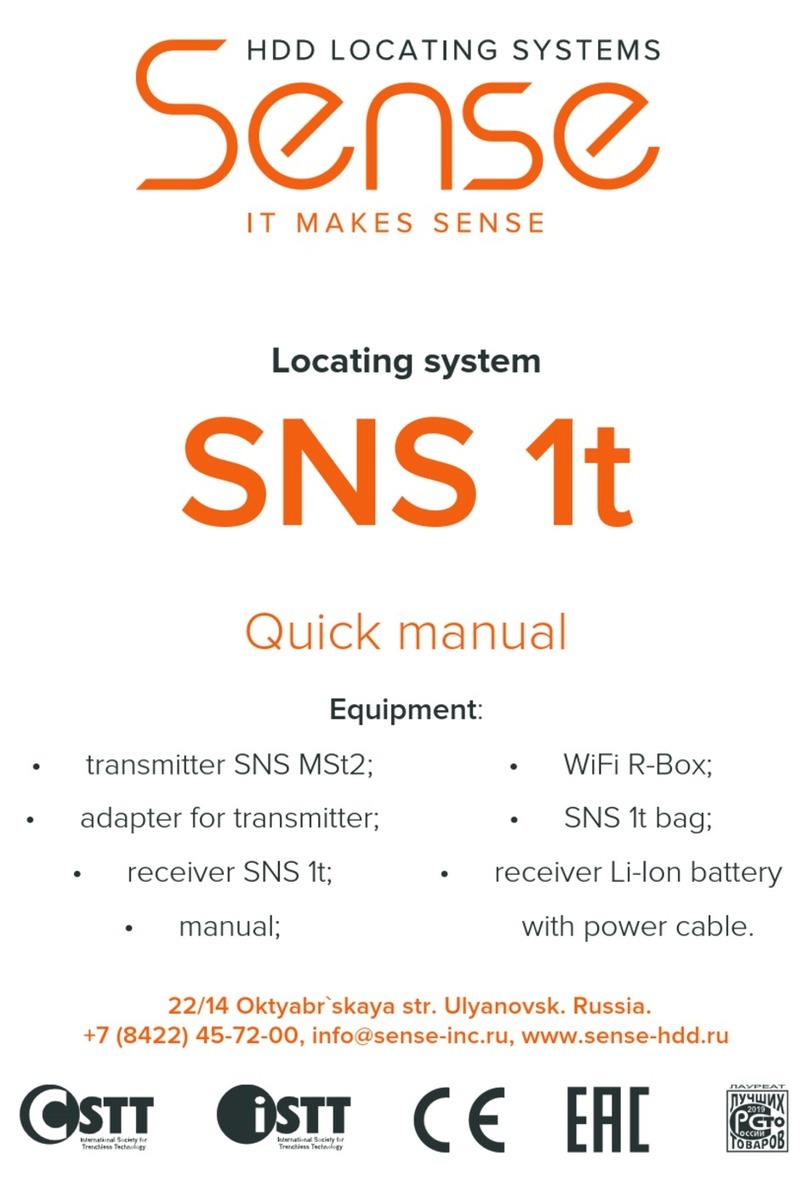SenseAir aSENSE RL User manual

Document
UMA 149
Rev
6
Page
1 (8)
CO2/ temperature transmitter with relay
General
The IAQ-sensor product aSENSE RL is used to measure indoor air carbon dioxide
concentration and temperature in rooms. It is flexible controller with programmable
output for relay control of e.g. mixed air dampers, humidifier and fans. The measured
values are shown on the display. The sensor is designed for wall mounting or
mounting in ventilation ducts.
The unit is designed for connecting to Direct Digital Control (DDC). The linear output
functions are pre-programmed as CO2 and temperature transmitters with jumper
selected outputs 0-10 V / 2-10 V / 0-20 mA / 4-20 mA. The measuring ranges can be
modified from a PC (Windows) and use of the software UIP (version 5 or higher)
together with the RS232 communication cable.
Figure 1 aSENSE RL and aSENSE Duct RL for duct mounting with two
for wall mounting types of cable gland
aSENSE RL

Document
UMA 149
Rev
6
Page
2 (8)
FUNCTIONAL DESCRIPTION
This part describes the function of the standard configuration of aSENSE RL. It may
be re-programmed before or after the installation by a PC and the standard UIP
software (version 5 or higher).
Out(1) = measuring signal of carbon dioxide concentration lowest value - highest
value
Out(2) = measuring signal of temperature lowest value - highest value
Out(3) = ON/OFF signal of demand of air quality
The opening of the relay is controlled by the hysteresis of the relay. See figure 4.
Figure 2 The measuring signal of carbon dioxide.
Figure 3 The measuring signal of temperature
Figure 4 The relay output

Document
UMA 149
Rev
6
Page
3 (8)
Sensor outputs
Terminal
Default Output
Default Output
Range
Outputs of this
sensor
Output Range of this
sensor
Out(1)
0-10VDC
0-2000 ppm CO2
See label
See label
Out(2)
0-10VDC
0-50 oC
32-122 oF
See label
See label
Relay
Closed
Open
> 1000 ppm CO2
< 900 ppm CO2
See label
See label
Table I. Default output configurations for aSENSE RL
The red LED is lit when the relay output is closed.
Formulas for calculation of output values
Configuration
Output Range
Formula for calculation
0-10 VDC
0-2000 ppm CO2
0-50 oC
32-122 oF
CO2value = Volt/10*2000
Temperature value in oC = Volt/10*50 = Volt*5
Temperature value in oF = Volt*9+32
2-10 VDC
0-2000 ppm CO2
0-50 oC
32-122 oF
CO2value = (Volt –2)/8*2000
Temperature value in oC = (Volt –2)/8*50
Temperature value in oF = (Volt –2)/8*(122-32)+32
4-20 mA
0-2000 ppm CO2
0-50 oC
32-122 oF
CO2value = (mA-4)*2000/16
Temperature value in oC = (mA-4)*50/16
Temperature value in oF = (mA-4)/16*(122-32)+32
a-b
c–d
Value = (reading-a)/(b-a)*(d-c)+c
a = lowest value of the configuration
b = highest value of the configuration
c = lowest value of the range
d = highest value of the range
Table II. Calculation of CO2value and temperature value for aSENSE RL

Document
UMA 149
Rev
6
Page
4 (8)
Output Configurations
The sensors/controllers are supplied from the factory (unless otherwise ordered) with
0...10VDC linear outputs for Out(1) and Out(2) (see Table I). If other options are
needed for the application, the output jumpers have to be configured before the unit
is powered up. Each jumper selection is independent from the others, except for the
“Start point selection” jumper, which affects both, Out(1) & Out(2), linear outputs.
Alternative measuring ranges of the outputs can be selected with the software UIP
(version 5 or later).
Jumper
Position
Function
Start point
selection
jumper
0%
20%
Jumper top position provides 0Vdc or 0mA start point for Out(1), Out(2)
(0-20mA or 0-10V).
Jumper bottom position provides 2Vdc or 4mA start point for Out(1), Out(2)
(4-20mA or 2-10V).
Out(1)
Current
Voltage
Connection in position “Current” provides 0/4-20mA output range for Out(1).
Connection in position “Voltage” provides 0/2-10VDC output range for
Out(1).
Out(2)
Current
Voltage
Connection in position “Current” provides 0/4-20mA output range for Out(2).
Connection in position “Voltage” provides 0/2-10VDC output range for
Out(2).
Table III. Configuration jumpers for aSENSE RL
FUNCTIONAL TEST aSENSE RL
Self-diagnostics
The system contains complete self-diagnostic procedures. A full system test is
executed automatically every time the power is turned on. In addition, constantly
during operation, the sensor probes are checked against failure by checking the valid
dynamic measurement ranges. All EEPROM updates, initiated by the sensor itself,
as well as by external connections, are checked by subsequent memory read back
and data comparisons. These different system checks return error bytes to the
system RAM. The error codes are available by connecting a PC with a special
RS232 cable connected to the UART port slide connector. The error codes are
shown in the software UIP (version 5 or later). Warm up and Out of Range are the
only bits that are reset automatically after return to normal state. All other error bits
have to be reset manually after return to normal by power off/on.
The yellow LED flashes if an error has been detected. If a fatal error has been
detected the yellow LED is lit.

Document
UMA 149
Rev
6
Page
5 (8)
Error code and action plan
Bit #
Error
code
Error description
Suggested action
0
N/A
Fatal Error
Try to restart sensor by power
OFF/ON. Contact local distributor
1
2
Reserved
2
4
Algorithm Error.
Indicate wrong EEPROM
configuration.
Try to restart sensor by power
OFF/ON.
Check detailed settings and
configuration with UIP software
version 5 and higher.
Contact local distributor.
3
8
Output Error
Detected errors during output
signals calculation and
generation.
Check detailed status of outputs
with UIP software version 5 and
higher.
4
16
Self-Diagnostic Error.
Algorithm timeout.
Check detailed self-diagnostic status
with UIP software version 5 and
higher.
Contact local distributor
5
32
Out of Range Error
Accompanies most of other
errors.
Resets automatically after
source of error disappearance.
Try sensor in fresh air.
Check connections of temperature
probe.
Check detailed status of
measurements with UIP software
version 5 and higher.
See Note 1!
6
64
Memory Error
Non-fatal error during memory
operations.
Check detailed settings and
configuration with UIP software
version 5 and higher.
7
128
Warm Up state
Is always set after power up or
power failure. Resets after
restart sequence.
If it doesn’t disappear in half a
minute, check power stability.
Table IV. Error codes
Note 1. Any probe is out of range. Occurs, for instance, during over exposure of CO2sensor, in
which case the error code will automatically reset when the measurement values return to normal.
Could also indicate the need of zero point calibration. If the CO2readings are normal, and still the
error code remains, the temperature sensor can be defect or the connections to these are broken.
Remark:If several errors are detected at the same time the different error code numbers will be
added together into one single error code!
PLEASE NOTE! The sensor accuracy is defined at continuous operation (at
least 3 weeks after installation)

Document
UMA 149
Rev
6
Page
6 (8)
Maintenance
The aSENSE RL is basically maintenance free. An internal self-adjusting calibration
function takes care of normal long term drift associated to the CO2sensor. To secure
the highest accuracy, a time interval of five years is recommended between CO2
calibrations, unless some special situations have occurred.
A zero calibration can be performed by use of pure nitrogen or air that has passed
through a chemical absorber and a PC together with the UIP software version 5 (or
higher) or by shortening of holes marked in figure 2 for at least 10 seconds. The
sensor needs stable gas flow for at least 3 minutes before zero calibration. The Zero
Calibration bag can be used to produce carbon dioxide free air. The software can be
free downloaded from www.senseair.com. The RS232-cable and the zero calibration
bag can be ordered from SenseAir. The cable is to be connected to the UART port
slide connector (see Fig. 7). For change of control parameters and re-calibration of
temperature this PC tool has to be used. Zero calibration can be done with PC and
UIP software version 5 or by shorting marked holes in figure 5. The check can be
done on site without interfering with the ventilation system.
A Back-ground calibration is an easy way to correct a sensor’s zero point. The
sensor needs fresh air (380-420 ppm CO2). Shorten holes marked in figure 5 for at
least 10 seconds.
This is for sensors with measuring ranges between 0-3000 ppm and 0-4%:
When a zero calibration shall be executed a plastic tube with 2,2 mm outer diameter
and 0,8 mm inner diameter shall be inserted in marked holes of the sensor. A plastic
tubing is connected to the tube. The gas flow should be between 0,3 and 0,8 l/min.
The sensor needs stable gas flow for at least 3 minutes before zero calibration.
Shorten marked holes for at least 10 seconds. A successful calibration is
acknowledged by 5 flashes of the yellow LED. If unsuccessful, please release input
and waits at least 10 seconds before repeating the procedure again. Make sure that
the sensor environment is steady and calm!
Gas inlet
Figure 5 Part of the PCB with holes for gas inlets marked.

Document
UMA 149
Rev
6
Page
7 (8)
Duct mounting
If for some reason the printed circuit board (PCB) needs to be removed, special
precaution must be taken in order not to damage the temperature probe in the
sampling tube. When putting the PCB back in the protective housing, the probe must
be gently positioned in the sampling tube.
Figure 6 The aSENSE RL for duct mounting. The temperature probe is the black body in the sampling
tube.
+
~
Figure 7 The aSENSE RL printed circuit board with CO2sensors for measuring ranges 0-3000ppm
and 0-4%.

Document
UMA 149
Rev
6
Page
8 (8)
This product is in accordance with the EMC 2004/108/EC, 92/31/EEG including
amendments by the CE-marking Directive 93/68/EEC
The product fulfils the following demand:
EN 61326-1:2006, Class B equipment, Table 1 - Basic immunity test requirements
SenseAir®AB (headquarter)
Stationsgatan 12
Box 96
820 60 Delsbo
SWEDEN
Phone: +46-(0)653 - 71 77 70
Fax: +46-(0)653 - 71 77 89
E-mail: info@senseair.com
Web site: www.senseair.com
Table of contents
Other SenseAir Transmitter manuals
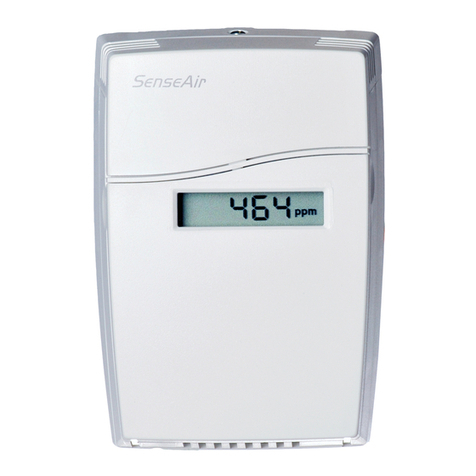
SenseAir
SenseAir aSENSE User manual
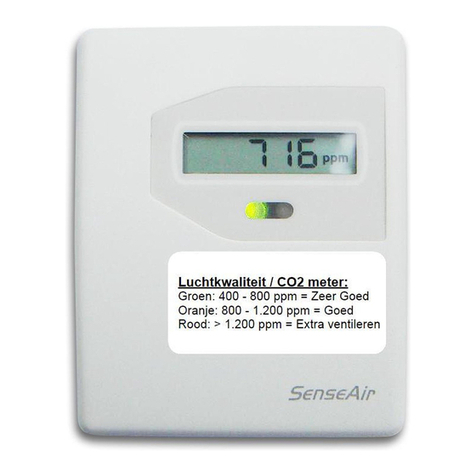
SenseAir
SenseAir eSENSE User manual
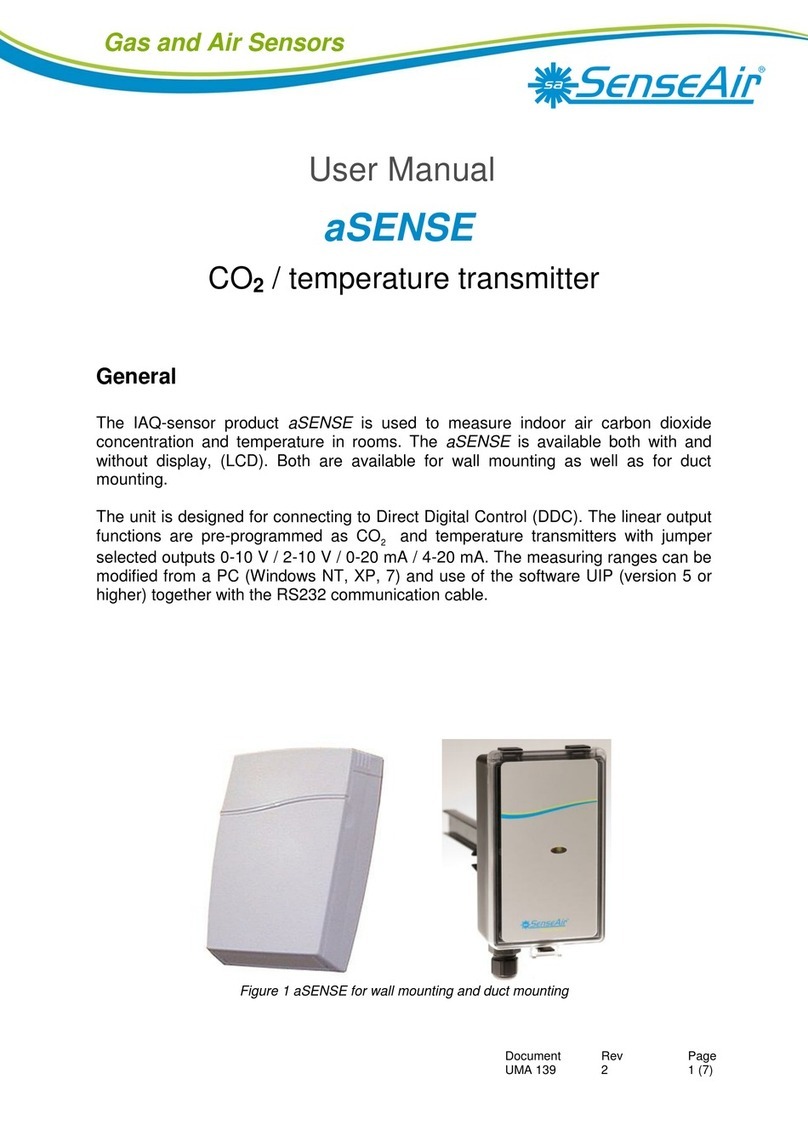
SenseAir
SenseAir aSENSE User manual
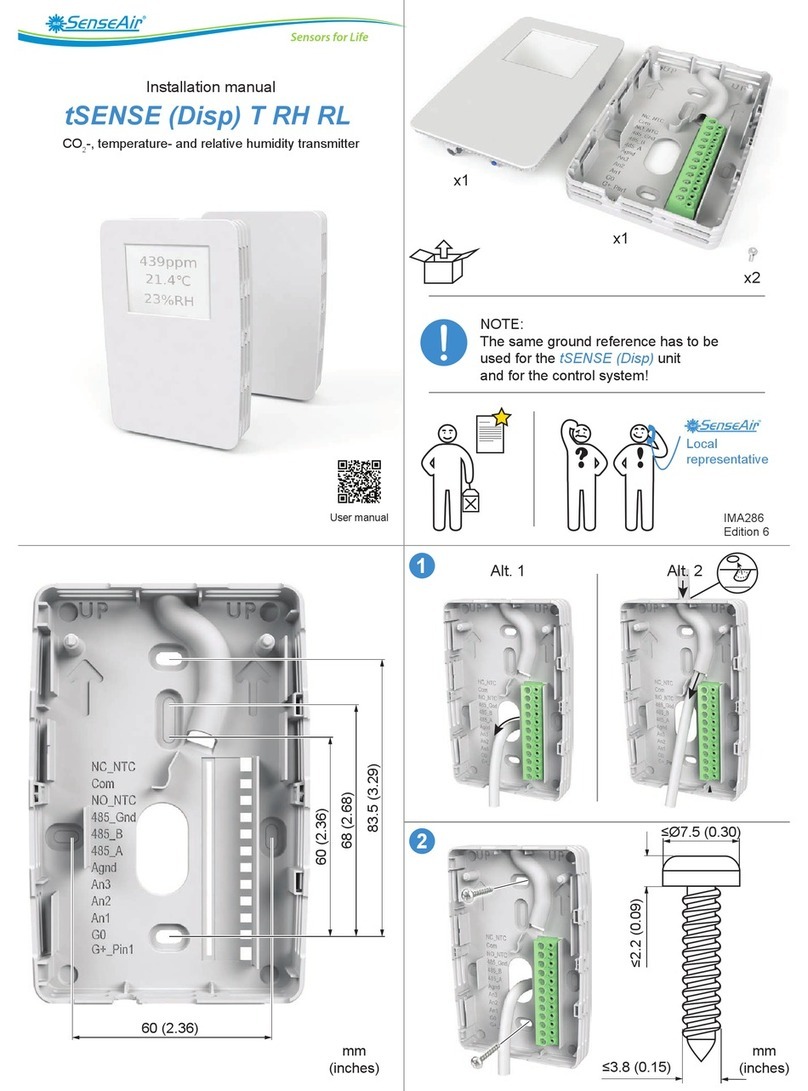
SenseAir
SenseAir tSENSE (Disp) T RH RL User manual
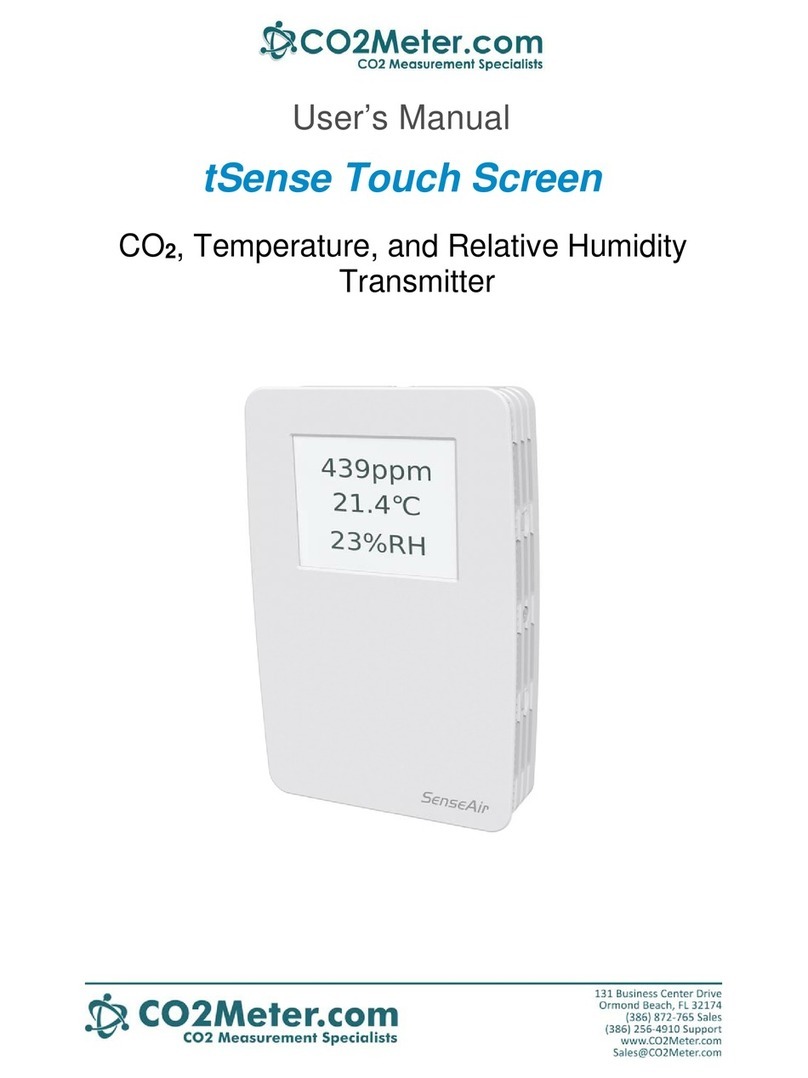
SenseAir
SenseAir tSense User manual

SenseAir
SenseAir aSENSE User manual
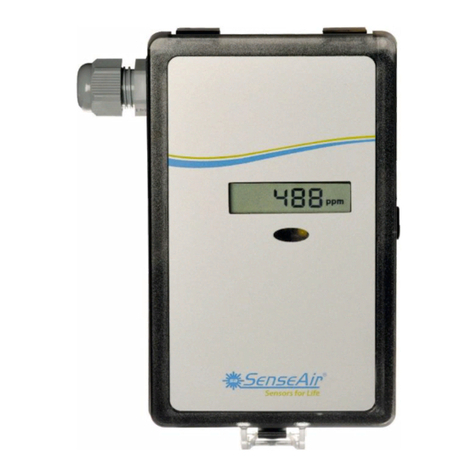
SenseAir
SenseAir eSENSE Ind User manual
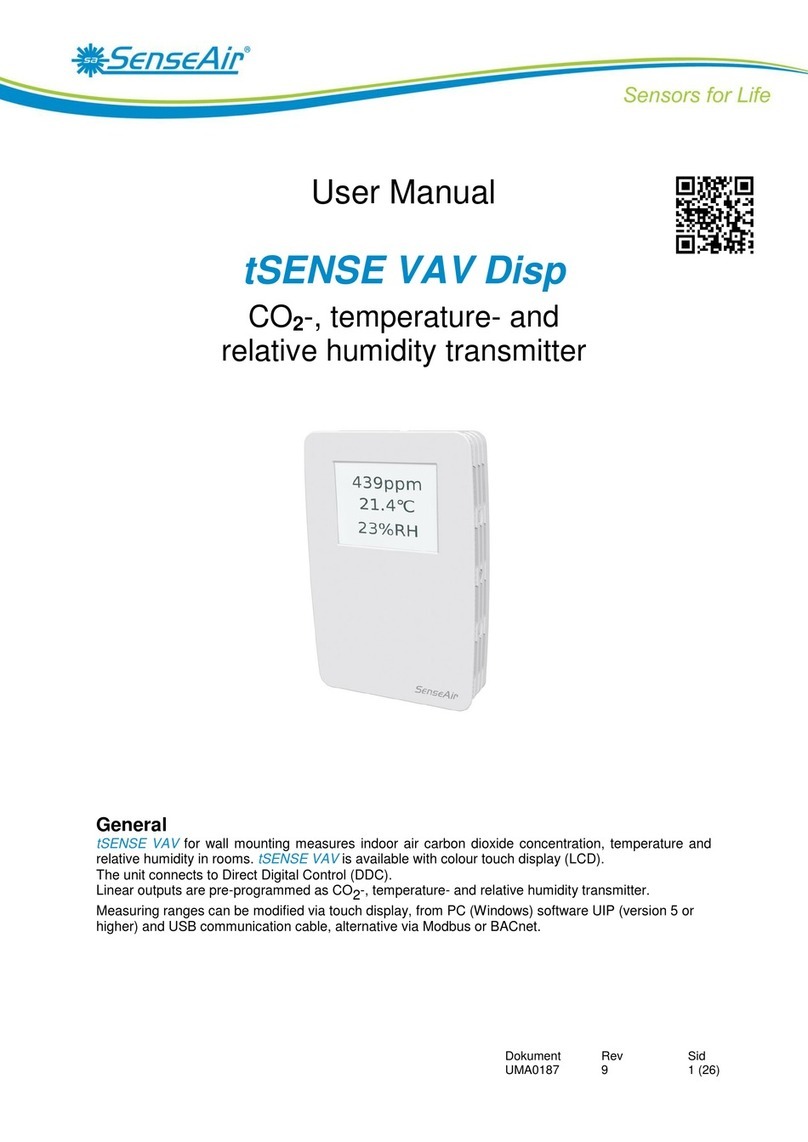
SenseAir
SenseAir tSENSE VAV Disp User manual

SenseAir
SenseAir eSENSE User manual

SenseAir
SenseAir aSENSE User manual
Popular Transmitter manuals by other brands
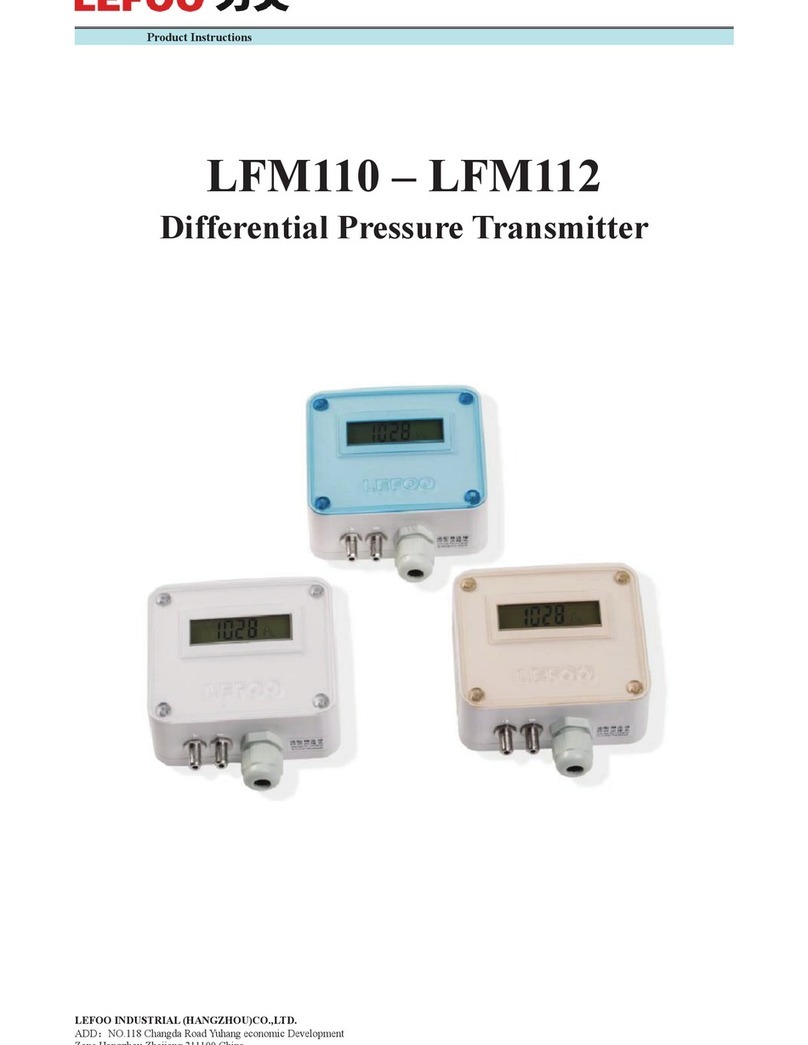
LEFOO
LEFOO LFM110 Series Product instructions

Emerson
Emerson Rosemount 708 Quick installation guide

BWI Eagle
BWI Eagle AIR-EAGLE SR PLUS 36-1800-120VAC Product information bulletin
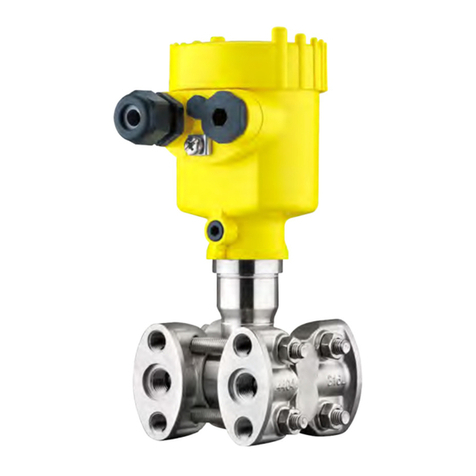
Vega
Vega VEGADIF 85 Quick setup guide
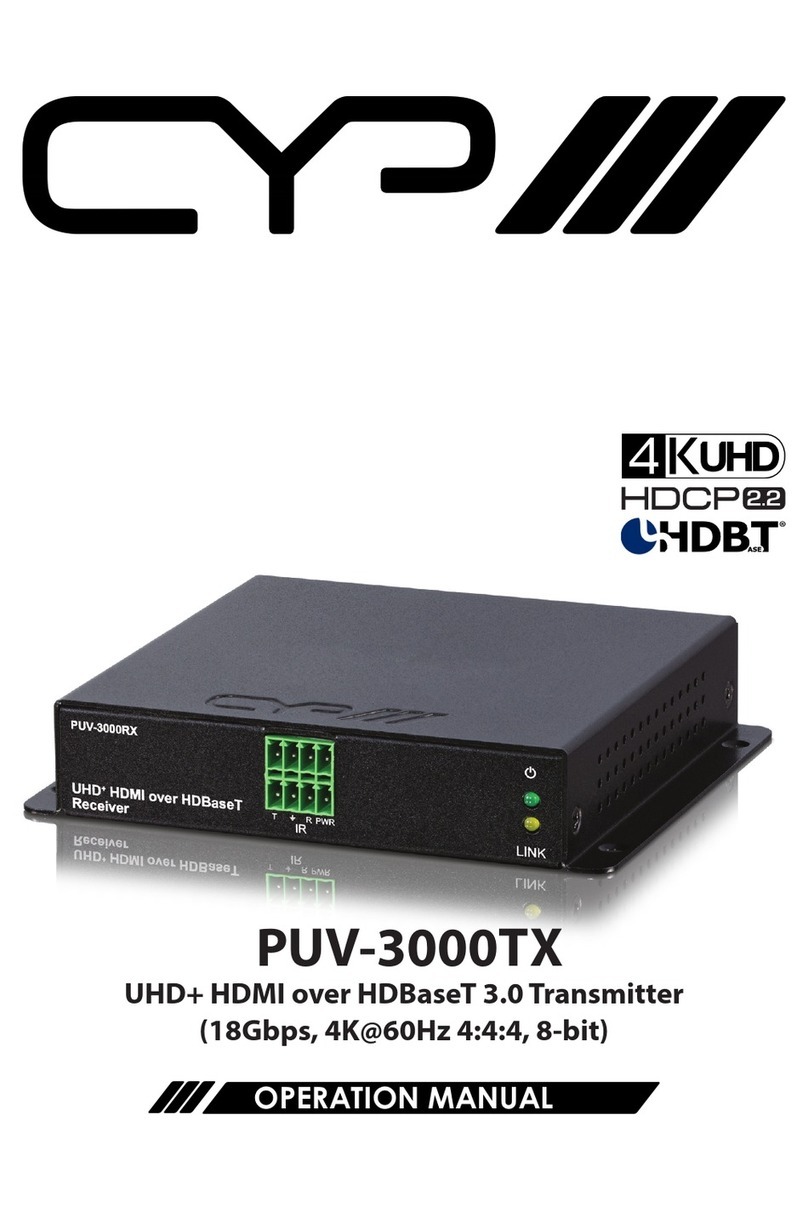
CYP
CYP PUV-3000TX Operation manual
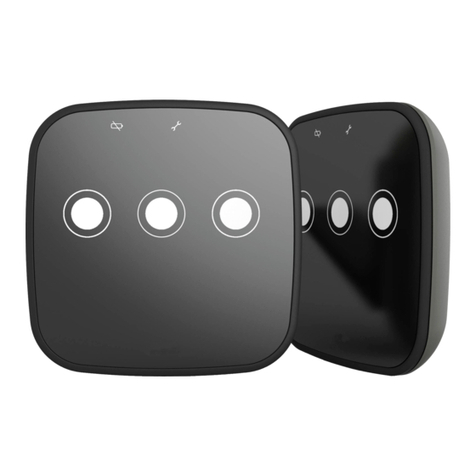
JCM Technologies
JCM Technologies KEEpush quick guide



